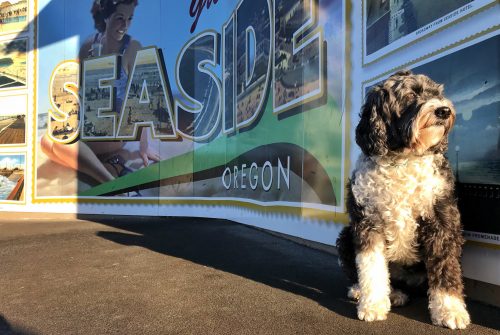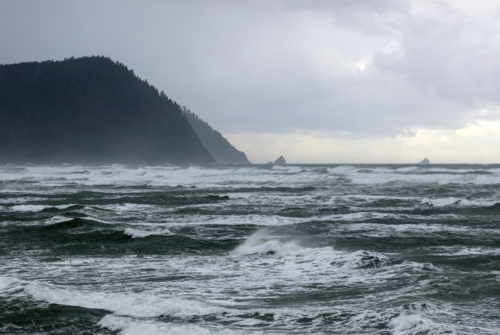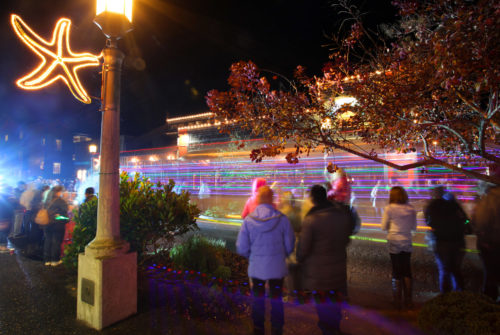In 1940, the “End of the Trail” sign was built at the turnaround to commemorate the Lewis & Clark expedition’s two year, 4,000 mile journey across the North American continent. The original sign was a depiction of the expedition’s crowning achievement and a monument to the historical significance of the North Oregon Coast.
“Ocian in view! O! the joy!” wrote Capt. William Clark as he stood at the Columbia River Estuary up north. The expedition ultimately settled on the south side of the Columbia in December of 1805 (15 miles north of Seaside in present day Astoria). There they built Fort Clatsop and called it home for the winter. Nowadays, Fort Clatsop is a magnet for enthusiasts and includes a replica of the original fort, an interpretive center offering an exhibit hall, a theater, and also features popular ranger-led historical programs.
The Salt Works in Seaside is a historical site commemorating the expedition’s salt making activities (salt was vital in the food-preservation process). They set up camp just off the sand dunes which is now a residential area next to the promenade on Lewis & Clark Way.
On January 6, Clark took 12 men through the Salt Makers’ Camp and over Tillamook Head to view a beached whale at what is now Ecola State Park (“ecola” is the Chinook word for whale) and barter for blubber and oil. While on the Tillamook Head trail, Clark paused at one of the many spectacular viewpoints and later wrote “From this point I beheld the grandest and most pleasing prospects which my eyes ever surveyed, in my frount a boundless Ocean . . . . the Seas brak with great force [and] gives this Coast a most romantic appearance.”
These are just a few of the local Lewis & Clark historical sites in the area. Thanks to preservation efforts, all of these landmarks and moments of awe in the Lewis & Clark legacy can be relived along Oregon’s North Coast by the modern explorer. However, the original “End of the Trail” sign at the turnaround has been replaced by a towering bronze statue of the explorers facing west. It’s a transporting experience looking out over the Pacific next to the bronze replicas of Meriwether Lewis and William Clark. At these times Capt. Clark’s outcry, “Ocian in view! O! the Joy!” becomes a passionate sentiment that rings true even in our modern times.
Editors Note: The quotations above originate from William Clark’s journal. Though containing typos, Clark’s words have been quoted with his original creative spelling intact.





















